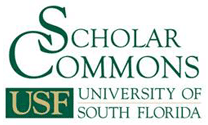Home > Open Access Journals > JSS > Vol. 9 > No. 2 (2016)
Author Biography
Dr. David C. Hofmann is an Assistant Professor of Sociology at the University of New Brunswick, a post-doctoral fellow with the National Consortium for the Study of Terrorism and Responses to Terrorism (START) at the University of Maryland, and a senior research affiliate with the Canadian Network for Research on Terrorism, Security, and Society (TSAS). His most recent research is related to the Freemen-on-the-Land sovereigntist movement in Canada, and he is working on a study that models the fragmentation of trafficking networks upon removal of key actors and leaders. He received his Ph.D. in Sociology from the University of Waterloo, and his Master’s Degree in Criminology from the University of Montreal.
DOI
http://dx.doi.org/10.5038/1944-0472.9.2.1486
Subject Area Keywords
Ideology, International security, National security, Nonstate actors, Security policy, Strategy, Violent extremism
Abstract
Despite the historical and contemporary prevalence of charismatic terrorist leaders, there has been very little empirical examination of the relationship between charismatic forms of authority and the strategic operation of terrorist groups. In response to this gap in knowledge, this study seeks to investigate if charismatic authority has a real-world impact on strategic choices and attack outcomes of terrorist groups. Using a theoretical framework meant to help measure charisma in terrorist organizations, this study quantitatively examines how differing levels of the presence of charismatic authority contributes to the choice in operational tactics (e.g., weapon and target choices) and the results of attack outcomes (e.g., success rates, lethality) within a sample of thirty international terrorist groups. In the concluding section, relevant findings, policy recommendations, study limitations, and areas for future research are discussed.
Acknowledgements
This manuscript is an adapted version of a chapter from the author’s Ph.D. dissertation. This research was conducted with financial support from a Public Safety Canada Research Affiliate Grant (2013-2014).
Recommended Citation
Hofmann, David C.. "The Influence of Charismatic Authority on Operational Strategies and Attack Outcomes of Terrorist Groups." Journal of Strategic Security 9, no. 2 (2016)
: 14-44.
DOI: http://dx.doi.org/10.5038/1944-0472.9.2.1486
Available at:
https://digitalcommons.usf.edu/jss/vol9/iss2/3

